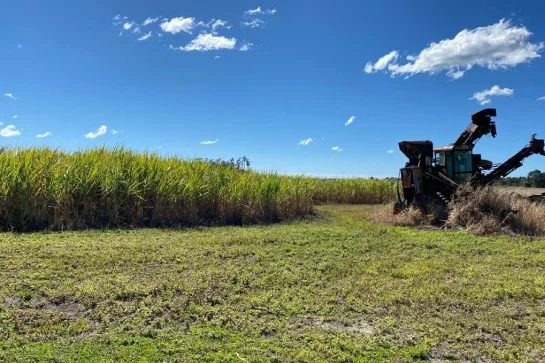Two highly invasive pest species with the potential to destroy native fauna and flora are being targeted by a joint taskforce throughout the Cairns region.
The taskforce has electric ants (Wasmannia auropunctata) and the Mexican bean tree (Cecropia spp) in its sights with a pointed surveillance program and follow-up treatment regimen.
Electric ants are golden-brown in colour and just 1-1.5mm long, and can inflict a painful, long-lasting sting and pose a significant threat to the region’s outdoor lifestyle and the environment.
First detected in Cairns in 2006, electric ants can blind pets, damage the environment, and have the potential to severely impact agricultural industries.
The Mexican bean tree is a fast maturing species that is quick to colonise open, disturbed sites or cyclone-damaged forests. They can cause serious and irreversible damage to native ecosystems.
Mayor Bob Manning said that if people came across either of these species they should report it immediately to Biosecurity Queensland on 132 523.
“Both these species can cause significant and irreversible damage to native ecosystems and also threaten our lifestyle,” Cr Manning said.
“While the work of this joint taskforce is extremely important and will go a long way to controlling and hopefully eradicating these pest species, the community also plays a role through the reporting of these pests.”
Representatives from across several councils in the region – including Cairns, Douglas, Tablelands and Cassowary Coast – as well as from Queensland Parks and Wildlife Service and Wet Tropics Management Authority are taking part in the combined taskforce exercise, coordinated by FNQROC and the Department of Agriculture and Fisheries.
The taskforce will be working with the National Electric Ant Eradication program and the Invasive Plants and Animals program, both part of Biosecurity Queensland, to combat these highly invasive pests and weeds.
This taskforce aims to define the current infestation boundaries and will apply appropriate treatment where either species is found.
Surveys are being conducted in the Redlynch area along Freshwater Creek, along the banks of the Barron River at Caravonica and in the northern suburb hillslopes of Palm Cove and Clifton Beach.
If the success of current works continue, these programs are on target to eradicate these pests in the region within the coming years.







